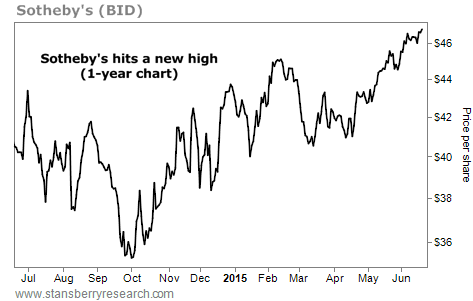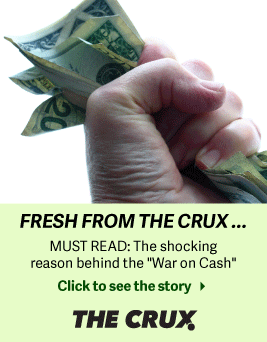| Home | About Us | Resources | Archive | Free Reports | Market Window |
The Simplest Way to View the Bond MarketBy
Friday, June 19, 2015
It has been a wild time for fixed-income investments over the last couple years...
Interest rates are historically low in the U.S. In Europe, rates have spent time in negative territory... meaning investors were willing to take a guaranteed loss.
It can be hard to get a handle on what's happening today in the bond market... never mind where things may be headed tomorrow.
Fortunately, as we'll explain today, there's a simple framework to help cut through the noise. We hope it will give you a more intuitive understanding of what's causing moves in bond markets and interest rates and help you figure out what will happen next.
Here's the basic bond market matrix:
 These three measures (the economy, inflation, and interest rates) usually head in the same direction. If you know which way two are going, you should have a good idea of what's happening to the third. For instance, if the economy is heating up and inflation is rising, you can be sure that interest rates are rising, too.
Alternatively, when you see interest rates start to rise, you should expect the economy to be doing well or inflation to be rising... and likely both.
You'll notice we don't have the Federal Reserve or the European Central Bank on there. That's because their direct effect is smaller than most think.
Bond prices and interest rates react to the demand for bonds as safe assets. When the economy is growing safely, investors prefer stocks. They sell bonds and interest rates rise. Similarly, higher inflation makes the income that bonds produce look less attractive. So investors sell bonds when inflation picks up.
It's also important to realize that these actions can happen on the basis of expectations, not necessarily reality.
Last month, the European Union announced that the region's gross domestic product (GDP) grew at a 0.4% rate in the first three months of the year. That was better than expected.
Investors saw strength in the region. They also figured this lowered the chances of deflation. They took appropriate action by selling off some of the super-safe German bunds (the German equivalent to U.S. Treasury bonds) they held.
The severity of the move had to do with valuation.
We like to call high-flying stocks "priced for perfection." When a growth company trades at many times earnings, it needs to perform perfectly. If it misses earnings estimates by even a tiny bit, it can see its price collapse quickly.
The same thing happened with the German bunds that paid 0.07% in interest. Investors bought these bonds because they were scared of risks in Europe and saw no better place to put their money. When the mood is that dark, even a tiny ray of sunshine can send investors flying to the exit.
In the U.S., we're in much the same scenario. People said that rates were rising in anticipation of a move from the Federal Reserve, but we think there's a feedback loop in effect.
Yes, the Fed may raise the interest rates it controls. But the Fed won't raise rates until the economy is humming along and inflation starts to pick up.
When rates were rising, investors were reacting to those conditions, not to the Fed in particular.
Now, with Wednesday's Fed announcement that rates will remain near zero, investors are pushing back their expectation for the Fed's rate hike. Since Wednesday, rates have started to drift down again.
So yes, it's a wild time for bond markets. Keep this simple bond market matrix in mind next time you want to get a sense of where the economy, rates, or inflation are headed. You won't find a simpler way to see exactly what's happening.
Here's to our health, wealth, and a great retirement,
Dr. David Eifrig
Further Reading:
Find Doc's latest market insights here:
"There are only three things you need to think about to earn an extra six figures in your retirement plan..."
"We have an excellent opportunity to pick up safe and stable income from a certain class of income-producing assets – no matter what happens in the broad economy."
"When are your safest investments a threat to your wealth? When you hold them in a very common – but very wrong – way."
Market NotesIT'S A BULL MARKET IN EXPENSIVE ART Over the last couple days, we've shown you the bull market in expensive clothes and expensive movies. You can add expensive art to the list...
Last month, a 1955 Picasso painting sold for a record $179.4 million, setting the record by more than $30 million for the most expensive work of art ever sold at auction. (Check out the video here.) On the same night, a 1947 sculpture by Alberto Giacometti sold for $141.3 million, setting the record for most expensive sculpture in history.
One company thriving in the expensive-art business is Sotheby's (BID). It's one of the world's largest art dealers, selling $40 million paintings to billionaires.
As you can see in the chart below, selling expensive art is a good business to be in right now. Yesterday, Sotheby's shares struck a fresh 52-week high. Shares have jumped 30%-plus since October. If the super-wealthy are shelling for expensive art, things "can't be all that bad" for the U.S. economy.
 |
Recent Articles
|



